
There used to be a time when the underhood fluids were checked every time the fuel tank was filled. When was the last time you did that? We jump in our cars and expect maximum performance and minimal maintenance, with no concern for the extremes the lubricants face. For this very reason, GM decided that making a low oil level warning system standard in 1991 was worth the cost.
These days, sticking up for the oil companies is not a position anyone wants to be in. Fuel prices keep rising while federal regulations restrict the oil company’s formulas for a greener environment. The long standing federal concern is exhaust emissions and fuel economy. Engine oils now range in the 0W30 viscosity range, in stark contrast to 20W50 oils used in earlier generations.
You can use 20W50 engine oil in Corvette engines BUILT BEFORE 1996 without engine damage, although it wastes fuel and it costs horsepower. There is a very important reason to use lower viscosity oil in the 1997 and up Corvette engine.
To meet 1997+ fuel economy requirements, GM had to decrease engine main and rod bearing clearances, which resulted in minimal oil splash in the cylinder wall area. Keeping the oil away from the reciprocating components and out of the cylinder walls lessened friction, thus saving fuel. Before 1997, engine bearing clearances were in the .0015 to .0030 range. The LS engine bearing clearances are below .001; typically in the .0006 to .0008 range.
Thick, high viscosity oil has a difficult time flowing at cold temperatures between the crankshaft bearings and crankshaft surfaces, which causes bearing wear. As unbelievable as it may seem, the bearings should never touch the crankshaft surfaces. A hydro-dynamic wedge of oil is formed between the surfaces, keeping the bearing surfaces off the crankshaft. An example of how destructive the lack of oil between the bearings can be: engine compression is around 160 PSI when an explosion occurs, forcing the piston downward. These exploding forces push the crankshaft down, creating motion. 160 pounds of pressure per square inch is hard to handle, never mind the combustion charge.
Changing the oil to 15W40 or 20W50 in 1997 and newer Corvettes can cause crankshaft and/or crankshaft bearing damage. Something else to consider is the extra effort required to turn the oil pump. Not only are you possibly hurting your engine internally, but fuel is wasted turning the extra load on the oil pump. Race engines are set-up with additional bearing clearances requiring high viscosity oils. Many race engines have pre-oilers forcing lubricants through the system before the engine is started. Serious race teams also heat the oil to make sure it is flowing properly before the race begins.
1997-2013 LS engines idle with 20-30PSI of oil pressure typically. On a hot day after the engine and drivetrain has warmed up, it is possible to see 15PSI at idle without any concern. The main thing to watch for is a rise in pressure once in gear. At 2000 RPM, you should see 45PSI. As RPM increases, so should the oil pressure. Most LS engines top out at 60-75PSI. When you see 0-5PSI at idle and 25-30PSI at cruising speed, you need internal engine work, not 20W50 oil.
We would like to share a similar experience with one of my own late model personal vehicles. An oil supplier recommended 15W40 to replace the 10W30 that had been used for 75,000 miles. After a few days, we noticed a slight knock at start-up. After a week of hearing the knock we switched back to 10W30 and the knock was gone.
The latest development involves the Feds again (surprise!). Now zinc phosphate has been eliminated. C5 and C6 owners do not have to be concerned with this, as all LS engines have a roller camshaft and lifters that are much easier on the cam.
Oil symbols and specifications
The “W” in the 5W30 stands for Winter Viscosity Classification, not “Weight”. The API (American Petroleum Institute) maintains service classifications for gas and commercial diesel engines. You will find the API in the bull’s eye of most oil containers. Here is a breakdown of what the service classifications mean:
SH 1994 Gas Engines
Adopted in 1992; recommended and for 1993 and up cars. SH replaced SG for the 1989-1992 engines. SH dealt with oxidation, deposit control, corrosion and rust. As of late this designation has been superseded by SJ.
SJ 1997 Gas Engines
Engines requiring SH can use SJ.
SL 2001 Gas Engines
On the market in July of 2001 for better high temperature deposit control and lower oil consumption. Replaces SJ oils.
SM 2004 Up Gas Engines
Oxidation resistance improvements: fewer deposits and better wear protection. SM can be used in all gas engines 1987 and newer.
Another designation that may be found on oil containers is ILSAC (which stands for International Lubricant Standardization and Approval Committee) and concerns global lubricant use. ILSAC testing is more rigorous and typically concerns high output, small capacity engines. While important, the SM designation would be the main concern.
Is it worth the extra cost for synthetic oil in a C5-C6 Corvette?
Two reasons actually make the case for synthetics.
- The use of multi-grade oils for temperature variations.
- Optimum performance in all temperatures.
Multi-grade petroleum oils start with thinner viscosity base stock then add viscosity improvers that will increase with heat. Depressants are added to let the engine start with adequate protection on cold mornings. All this viscosity jockeying makes for instability, lowering the oil viscosity over time. You start out with a viscosity grade of 30 and within a short while the oil viscosity drops and engine protection wanes. The lighter petroleum oil base stock allows the oil to burn easier at high temperatures, which may cause the formation of deposits and possibly increase oil consumption.
Synthetic engine oils require very few viscosity improvers. This will keep oil stable considerably longer with a minimum viscosity drop off, which will protect an engine much longer.
Synthetic oils really shine in two more areas. First, they pump easier in cold temperatures because they do not have paraffin to slow down oil flow. Minutes can elapse before the crankshaft and bearings are protected with their lifeblood. Secondly, because of their molecular structure (smaller uniform molecules) there is less heat build-up. If high oil temperatures do occur, synthetics will prevent engine failure from extreme temperatures better than petroleum oils.
The most important reason to use synthetic oil is the manufacturers warranty requirements. GM fills the crankcase at the factory with the same Mobil 1 we buy off the shelf. They know it works. Why chance it?
Oil contamination and change intervals
Oil contamination occurs, but you do have some control over it. Replacing your air filter and more so, making sure your engine receives clean filtered air is paramount. Fuel injected engines need careful inspection of the inlet air. Are the air duct pieces tight? In addition, are the PCV grommets in place and crankcase hoses tight on the throttle body? Unfiltered air goes directly to the piston rings and works its way into the crankcase, scoring the cylinders and crankshaft bearings.
Metallic particles slough off engine parts and end up in the oil. This is why we have filters, but some of the minute particles get by and attack the crankshaft bearing surfaces. Lesser quality oils allow more of the particles to slough off, exacerbating the situation.
Acids occur from combustion byproducts, causing corrosion as oil burns off deposits that are left behind in the engine. To protect your engine, the acids have to be removed or neutralized. Changing the oil and filter will take care of the acids. You can also accrue more trouble-free miles with proper air inlet maintenance or better yet, upgraded air filters.
As hard as it may be to go those extra miles between oil changes, it can be done without any ill effects. It is about discretion. If you are driving around town short distances without warming the oil up enough to burn off the condensate, adding to the oils acid content, you should change it at 3,000 miles or every year. Earlier fuel injected Corvette engines before 1994 dumped more fuel into the oil, diluting it and contaminating it with acids, requiring shorter change intervals. Highway trips that get you on the road for hours at a time allow for those 5,000+ mile oil changes.
C5 and C6 Corvettes use drive time, oil temperature, coolant temperature, and other data to make the decision when the oil should be changed, and they work well. Remember that the Corvette oil change warning system decisions are based on high quality synthetic oil. The oil change monitoring system has no clue what oil you are using. The newer the Corvette, the longer the oil change intervals (better fuel control keeps more of the fuel/acids out of the crankcase).
It really is possible to get 300,000 miles out of an engine with synthetic engine oils and proper oil change intervals, even if you drive your Corvette aggressively.
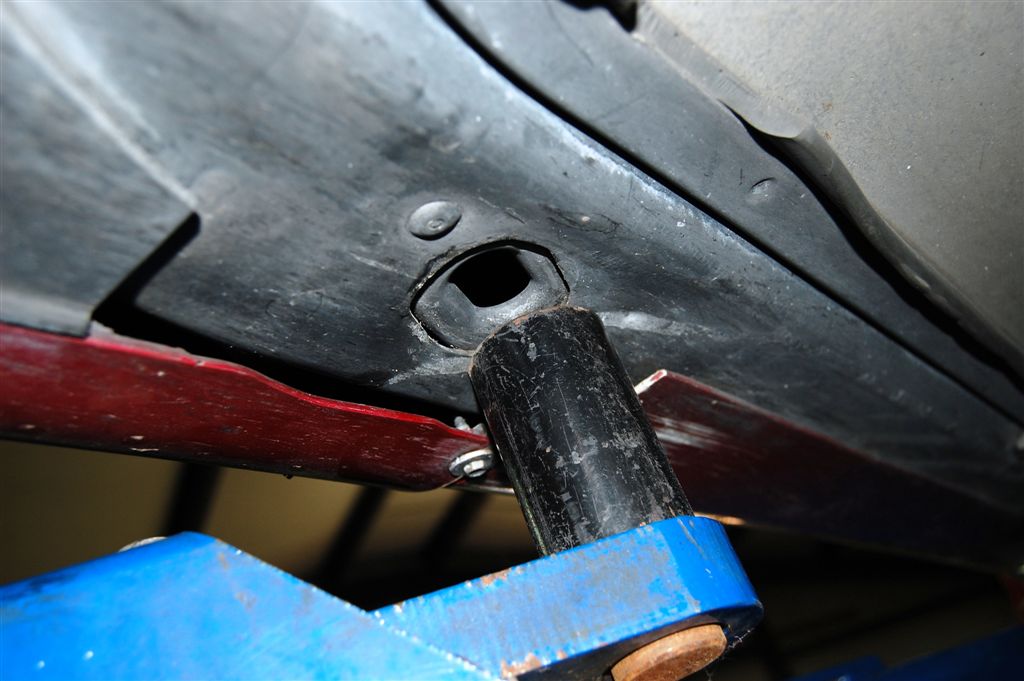
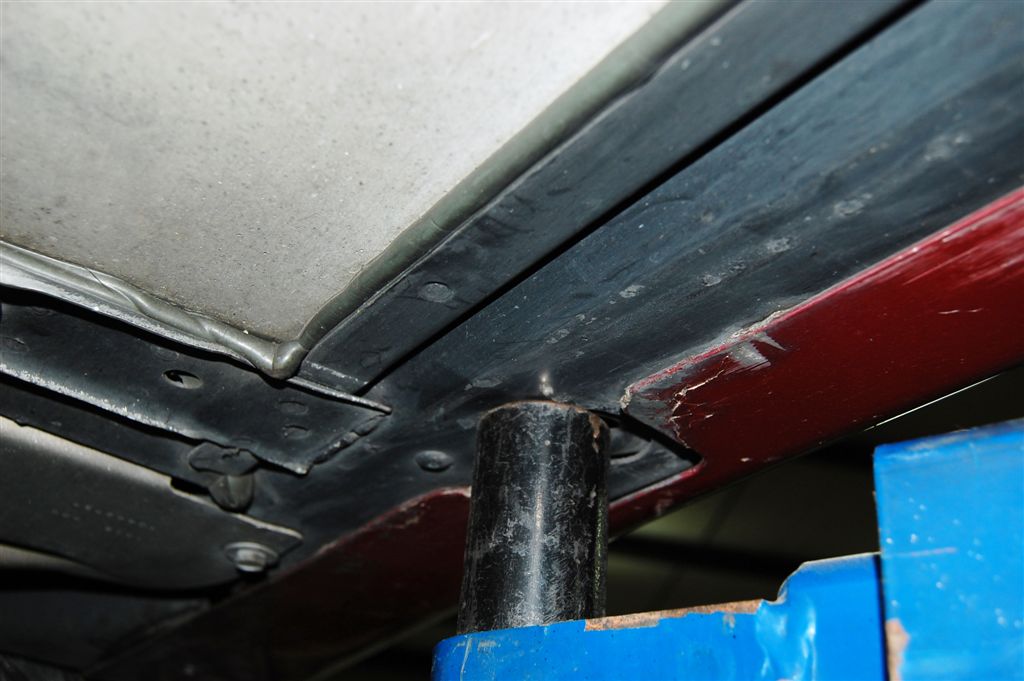
GM wrapped the body panels under the Corvette onto the frame rail. Careful placement of the lift arms or jack pads is required to prevent panel damage. Corvette Central’s part number 105380 and 115653 provide adequate protection for the lift arms or jack pads. Our lift was designed with these removal stands that also work well.
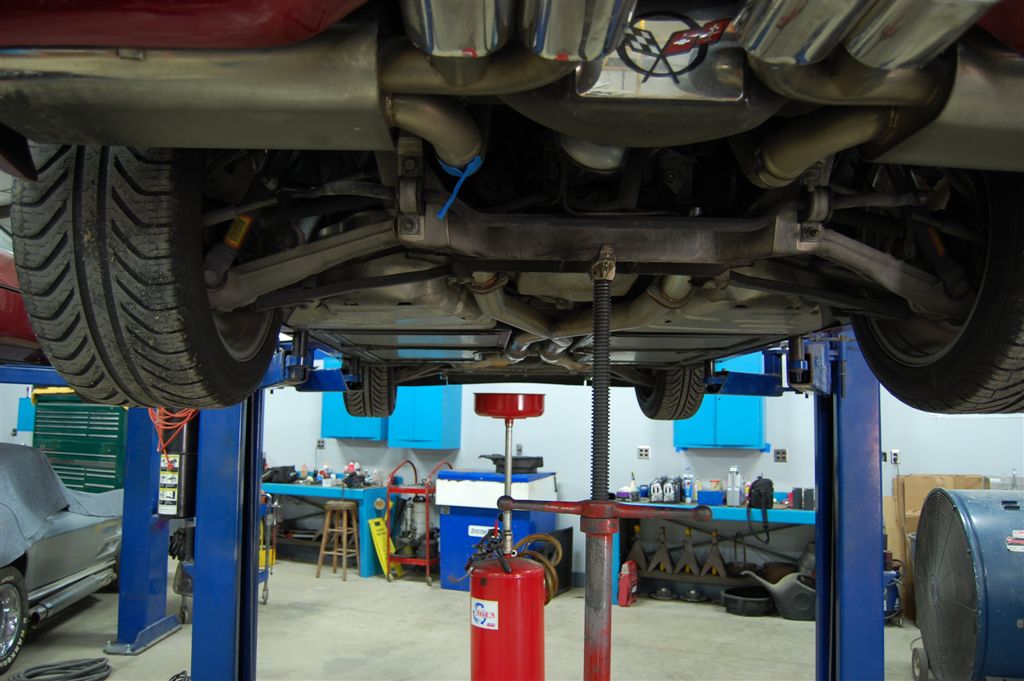
Note the “dead man” or jack under the differential crossmember. Use this to lift the back of the Corvette to remove as much used oil as possible. Be careful doing this to prevent lifting so high the center jack is holding all the load, causing a pivoting action to take place.
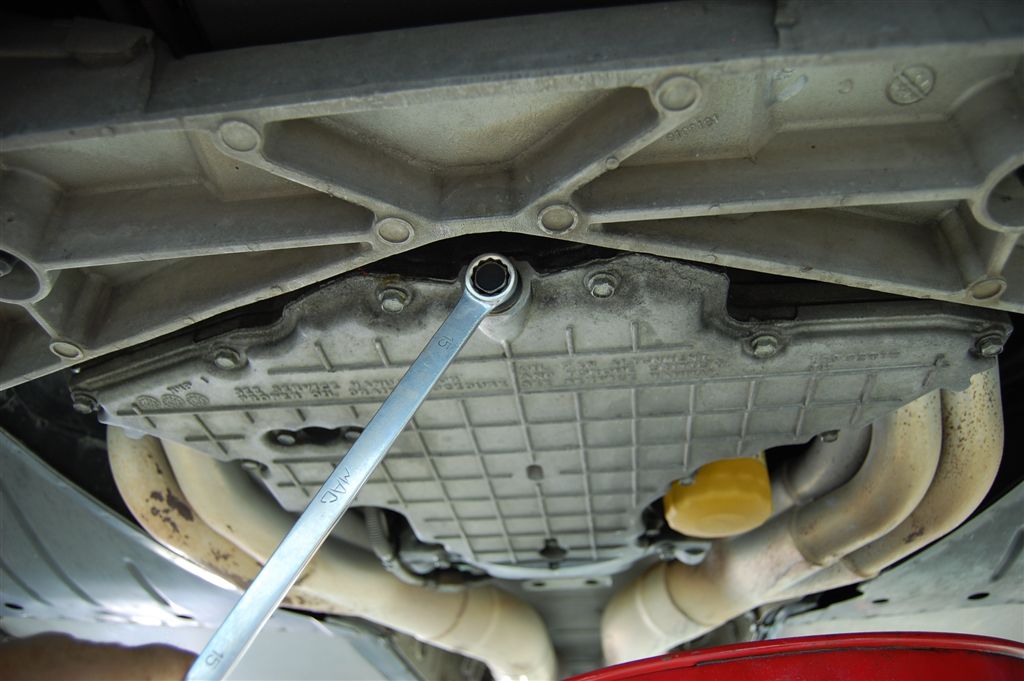
Our 15mm box end wrench is used to remove the oil pan drain plug. Nitryl gloves are recommended to keep the dirty oil off your hands. Take a look at the rubber seal. Corvette Central has part number 305035 drain plug available if needed. Usually after about five oil changes, the seal is ready for replacement.
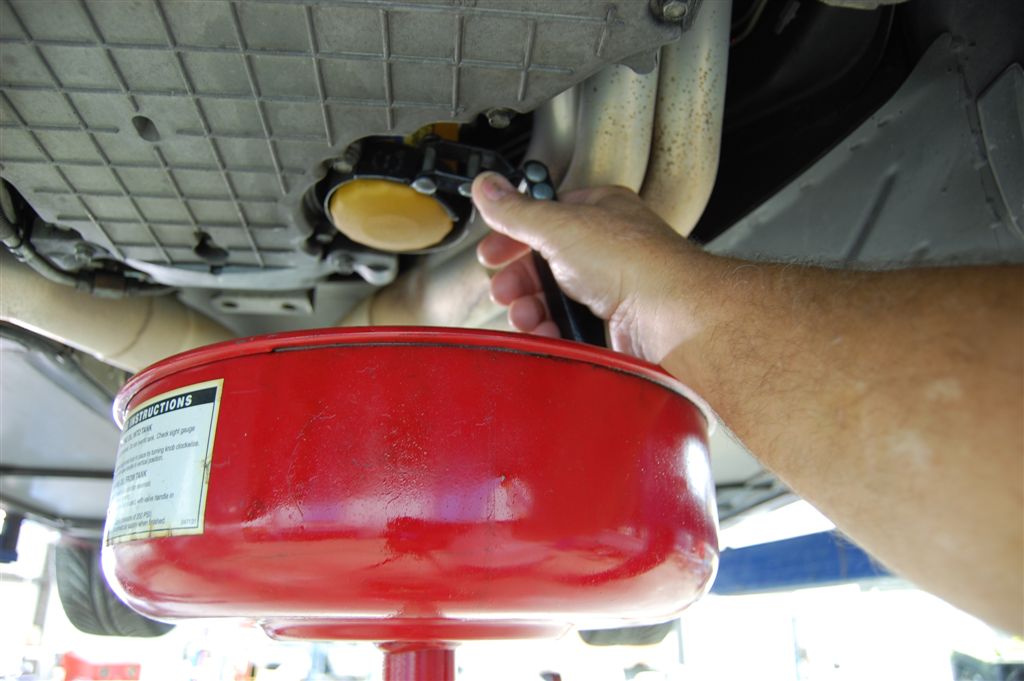
Use an oil filter strap wrench for removing the AC Delco PF46 oil filter. Remember the best time to change oil is when it is hot, so BEWARE!

We always fill our oil filter with fresh Mobil1 synthetic oil while the engine oil is draining. You can usually go back a couple of times to top off the filter for maximum oil fill.
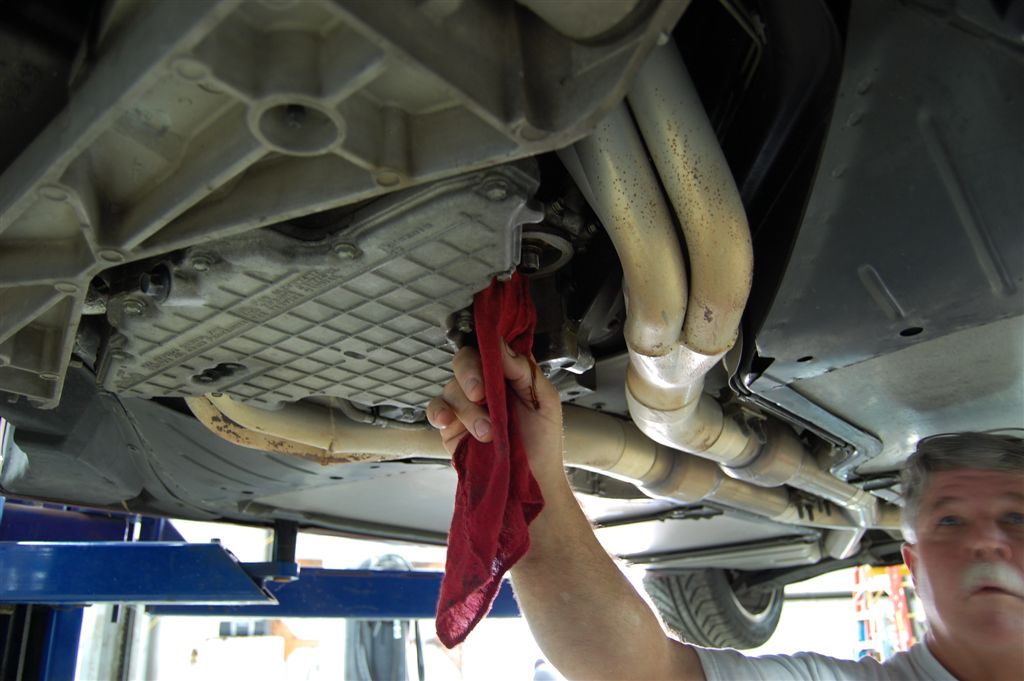
We wipe off the filter mounting pad area before the new filter goes on. Sometimes the oil filter rubber sealing ring sticks to the filter mounting pad, so make sure it is not there.
C5-C6 Transmission and Differential Servicing
C5 and C6 Corvette transmission placement is a radical departure from the traditional engine to transmission coupling. The idea was to shift the weight rearward, enhancing the handling characteristics with better front to rear balance. Placing the transmission rearward did require some major changes from traditional thinking. The driveline design would require a torque tube to couple the engine and transmission/differential assembly together. The torque tube would be used to keep the driveline rigid from front to back. The driveshaft resides inside the torque tube. No U-joints would be required to make the connection. The downside to the torque tube is diameter. It must be of sufficient diameter to keep the driveline rigid. Traditional driveshaft and U-joints take up less space in the trans tunnel, allowing more interior room. Torque tube transmission tunnels require large areas to accommodate the increased diameters.
One of the first things heard in the field concerning the C5 was manual transmission overheating. Automatic transmission overheating is commonplace when running the vehicle under race conditions. We never had this issue with the C4 ZF 6speed. The C5 has the capability of running hour after hour at high triple digit MPH. One of our customers made the annual trip to Nevada for the Silver State Classic Challenge. His stock 2001 ZO6 was driven to Nevada from Florida then onto the road course. The two lane 90 mile long highway has long straightaways and twists for some added fun. The idea is to see who has the quickest time without any side by side action. There are a couple of different classes from 95 MPH to 180MPH. After a tech inspection it was time to make the blast across the two-laner. The ZO6 performed beyond expectation with the exception of the transmission overheat light illuminating. This same overheating was noted by other C5 owners at the event.
When the owner brought the ZO6 in for servicing after the event, the transmission fluid smelled burnt and was a very dark color. GM was aware of this condition and has offered a six speed transmission cooler. We decided it would be best if the transmission cooler was installed. Subsequent trips out west proved the cooler was working with no more “overheat light” illuminating. Why is this important to the daily driver with occasional WOT (Wide Open Throttle) workouts? Heat is the enemy of confined driveline components. The C5-C6 transmission is tucked up into the tunnel with limited air flowing across it. Another theory is that convection is taking place from all the driveline assemblies being connected to one another. The engine bolts directly to the bellhousing with the torque tube also in direct contact. At the back end, the torque tube has contact with the transmission and differential. At some point during a drive cycle, the differential has the ability to get as hot as the engine or vice versa.
The traditional set-up with the transmission up front had the break between the differential and transmission. The use of aluminum alloys throughout the driveline has many advantages, including quicker heat dissipation. The same characteristics of the aluminum components also mean quicker heat convection from front to rear. Maintaining consistent temperatures above two hundred degrees is a good thing for condensate burn-off. We know that the C5-C6 driveline temperatures will be there consistently, so that is a good thing. The consistent heat also means the fluids are running at high temperatures most of their life. Changing the transmission fluid with high quality synthetics is a good thing for long life. Transmission design has changed dramatically over the years from sloppy loose gear sets to close tolerance gear sets. Tightening up the clearances also meant thick viscous fluids used in the past will not work properly for lubrication or shifting. Using 75-90W gear oil in a late model transmission means shifting will be very difficult if at all when the fluid is cold. Thick lubricants also take longer to reach vital areas keeping bearings correctly lubricated.
C6 Corvettes have manual transmission and differential coolers as standard equipment, but spirited driving will still get the fluids hotter than we would like to see. That is why fluid changes are important at annual intervals, depending on how hard you are pushing your C5 or C6. In many cases, racers change fluids before every race due to the extreme loading conditions. Participating in an occasional Gymkhana event would warrant the annual fluid change. Remember: the C5 would be much tougher on the fluids in race situations without an external cooler.
Fluids are complex and are required to adapt to many different conditions. Take transmission fluid, for example. It has to combat heat and friction surfaces. Specifically designated lubricants are required on the C5 and C6 synchronizer blocker ring linings. Synchronizer blocker rings slow down the gears during shifting to avoid gear clash. Early transmission designs used brass or bronze blocker rings to synchronize the gear changes. The latest technology uses a fibrous material on the blocker rings. The fibrous material is similar to automatic transmission clutch friction plates. This is why automatic transmission fluid is used to lubricate the manual transmission gear boxes. You do not want trouble with incorrect transmission fluid contaminating the blocker ring linings.
Similar to engine oil, transmission fluid provides cooling to the transmission internal components. Friction surfaces on the automatic transmission clutch packs clamp down onto gear sets to propel a Corvette. The “wet” friction clutch packs create heat as they engage. They also require specific friction modifiers in the fluid to allow smooth shifting without clutch material damage.
Torque converters create tremendous heat as they start a car from a dead stop to highway speeds. The torque converter is a viscous coupling that forces fluid from the impeller. The pressurized fluid is forced into the turbine, which is coupled to the input shaft. A stator is used between the impeller and turbine to increase efficiency. Without going any further into the innermost workings of the torque converter, suffice to say tremendous heat is generated as the impeller and turbine come up to speed.
High stall torque converters have modified impellers and turbines to raise stall speed. The byproduct of increased stall speed is even more heat. The advent of the torque converter clutch was for fuel mileage gains but it also helped eliminate inherent heat in the torque converter. Like the “wet” friction plates in the transmission clutch packs, the TCC (Torque Converter Clutch) locks up the torque converter and eliminates slippage. When the TCC is engaged, the transmission temperature drops significantly.
All of the requirements that the transmission fluids handle daily are quite amazing, considering that many transmissions are serviced infrequently. On top of the heat the fluid has to deal with, it is forced through small orifices regulating fluid flow. If that was not enough, the clutch application systems use the low viscosity clean fluid for proper shifting.
Transmission fluid requires higher thermal tolerance than engine oil due to lower viscosity. When you add or change transmission fluid, be especially careful to use the correct designation fluid. Check the manufacturer’s label for proper usage in your Corvette before pouring it in the fill tube. Improper fluid can cause chattering shifts and internal damage. One interesting point to add is that for many years there was no change interval in the owner’s manual. It stated to change the transmission fluid at 100,000 miles or overhaul, which usually meant at overhaul before 100,000 miles. Changing transmission fluid every two years is a good rule of thumb regardless of mileage. This will minimize condensate build-up, keeping you on the road past the 100,000 mile plus mark.
Fluid Recommendations
GM recommends Dexron III for all C5 manual and automatic transmissions for proper lubrication. Here is where things get fuzzy. GM says that GM part number 88861800 should be used in C6 2005-2013 Corvette manual transmissions. They also have a bulletin ID #1838912 stating that Dexron III can be used in place of the 88861800 fluid if it is not available. The bulletin also states that Dexron IV should not be used in place of 88861800 fluid.
Dexron IV was to replace Dexron III, and was quickly replaced by Dexron VI. Dexron VI is backwards compatible meaning it can be used in all previous GM built transmissions. The problem is Dexron VI is the latest greatest Dexron available presently only from GM dealers. As convoluted as this seems once all the issues are considered, Dexron VI is to be used in all C5-C6 Corvette transmissions manual or automatic.
This info pertains to Corvette transmissions. Please do not use this as a rule of thumb for all vehicles, whether they are GM or not.
One very good thing about synthetic fluid is its ability to handle continuous high heat. We recommend using good quality fluids and synthetics are the best policy.
We use synthetic transmission fluid in all of our vehicles because of the heat load they must endure. We use Mobil 1 or Corvette Central’s B&M Trick Shift. B&M Trick Shift meets or exceeds all the requirements of the Dexron III formula. Corvette Central also has a really nice deep cast aluminum pan to enhance your transmission’s performance. The pan comes in aluminum finish or black finish. Both pans will add extra fluid capacity which equates to lower temperatures and better performance. While changing the pan, do not forget about the filter that replaces the original filter assembly.
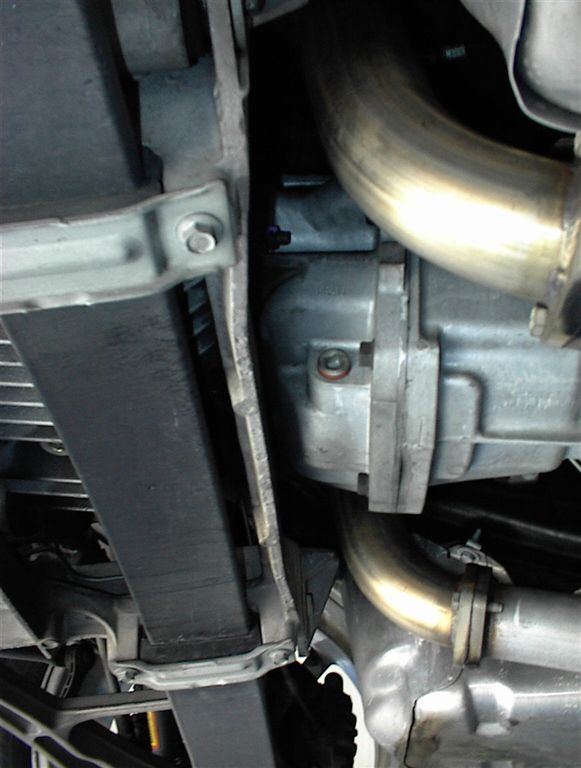
On the front side of the crossmember is the manual transmission drain plug. Use a 3/8″ ratchet to remove the transmission drain plug.

Be ready, as the Dexron III fluid comes out quickly. Note the “use Dexron III label” on the transmission case.
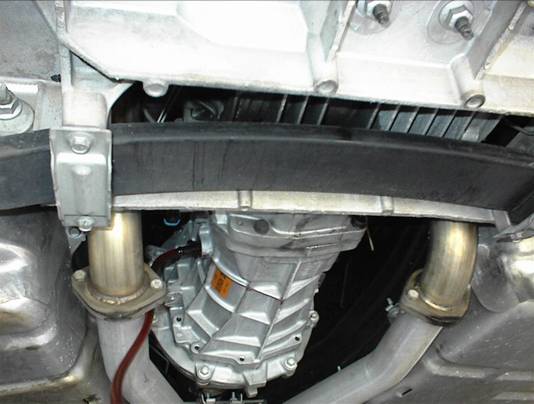
The same suction gun can be used to pump fluid into the manual transmission fill fitting. The fluid should also run out when the unit is filled. Wait until the fluid stops flowing before installing the fill plug.
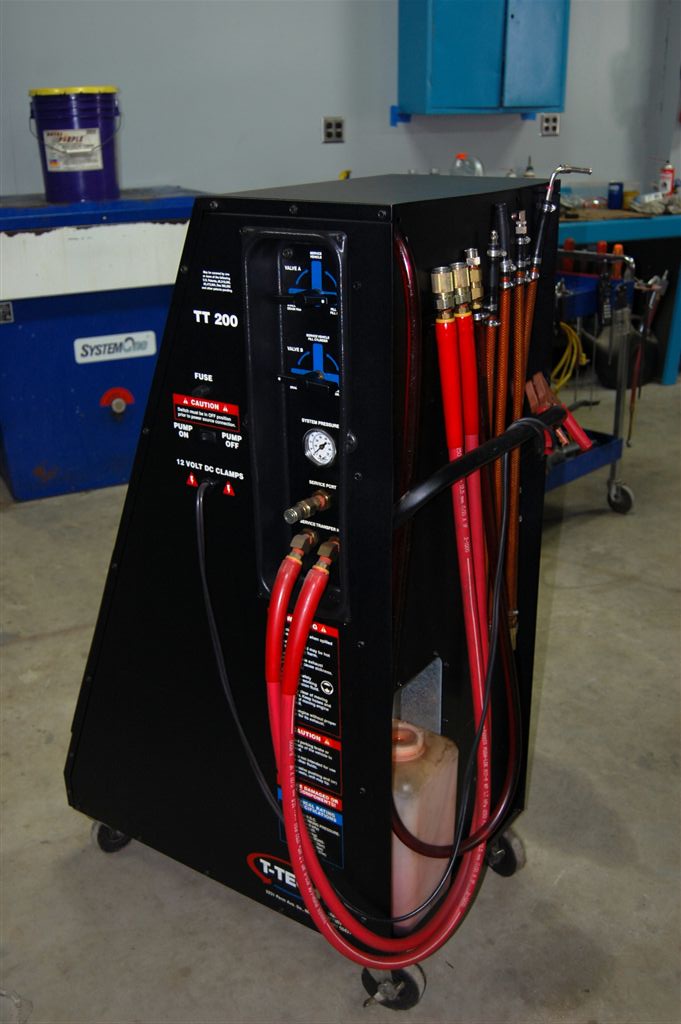
We use this transmission fluid exchange machine to remove the majority of fluid from the automatic transmission.
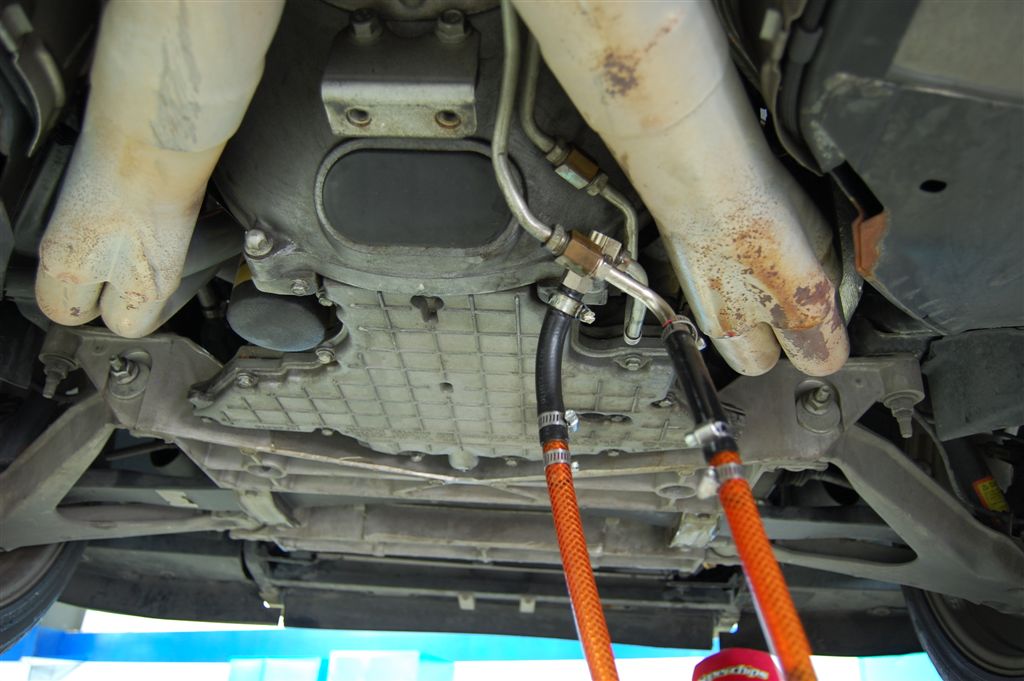
The transmission fluid exchange machine connects to the trans cooler tubes. The pressure out cooler tube forces the new fluid into the pressure in cooler tube. Place 12 quarts of fluid into the machine for the exchange.
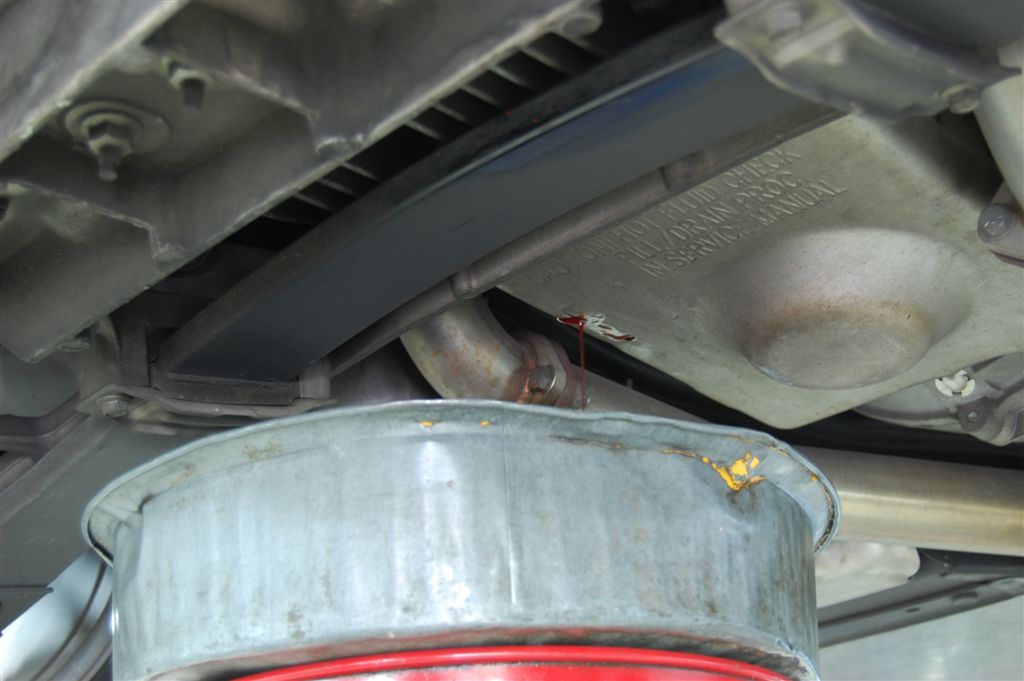
Once the fluid is exchanged, the pan is removed to replace the filter. The transmission exchange machine has a clean fluid reservoir that we use to evacuate the pan before pan removal. This prevents losing approximately 4-5 quarts of fluid when the pan is removed. By the way, that is how many quarts will be removed if the old-fashioned way of just removing the pan for draining method is used. That means not even 50% of the fluid is drained using the traditional methods.
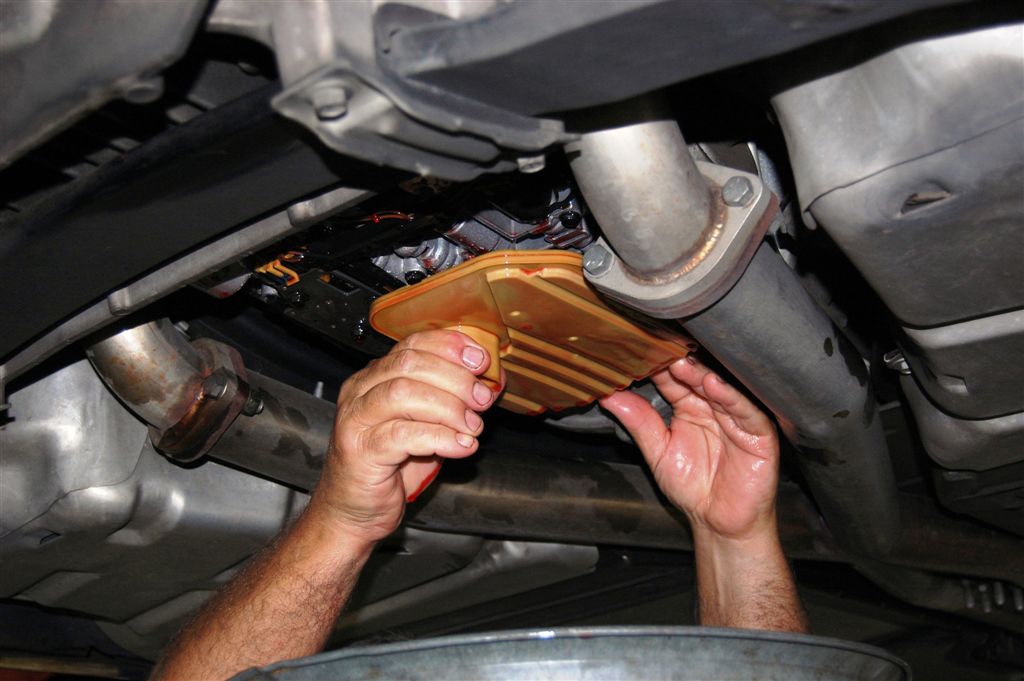
With the pan removed the trans filter is removed. Be ready for a torrent of fluid as the filter pulls out of the trans case.
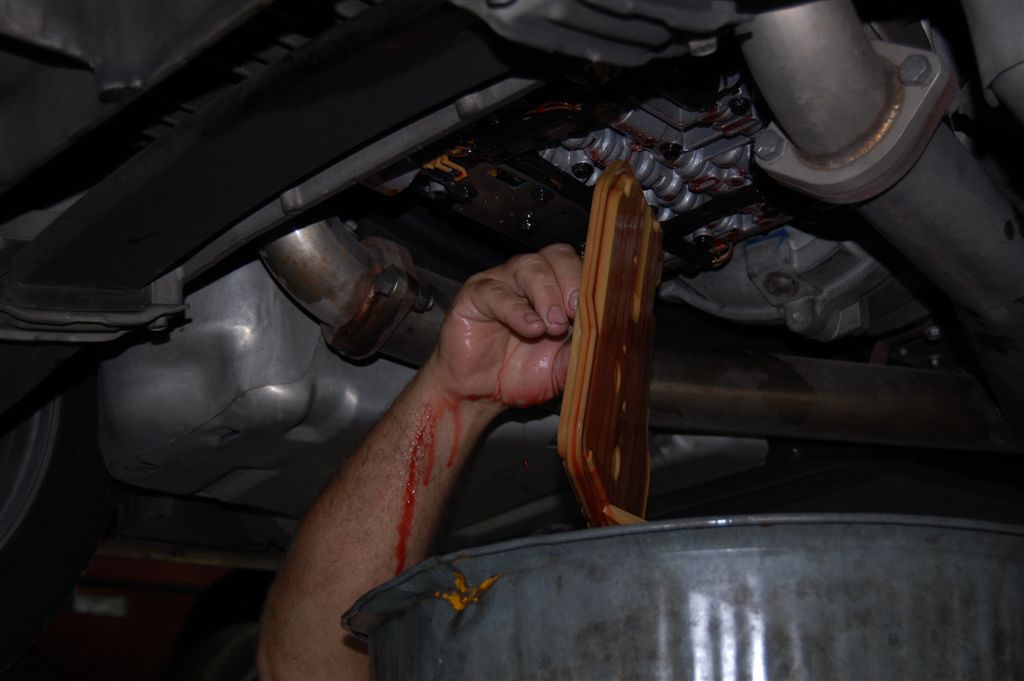
The filter is tilted down to remove as much fluid as possible. We recommend replacing the filter every other time the fluid exchange process is performed. This is if you are using the two year interval maintenance schedule.
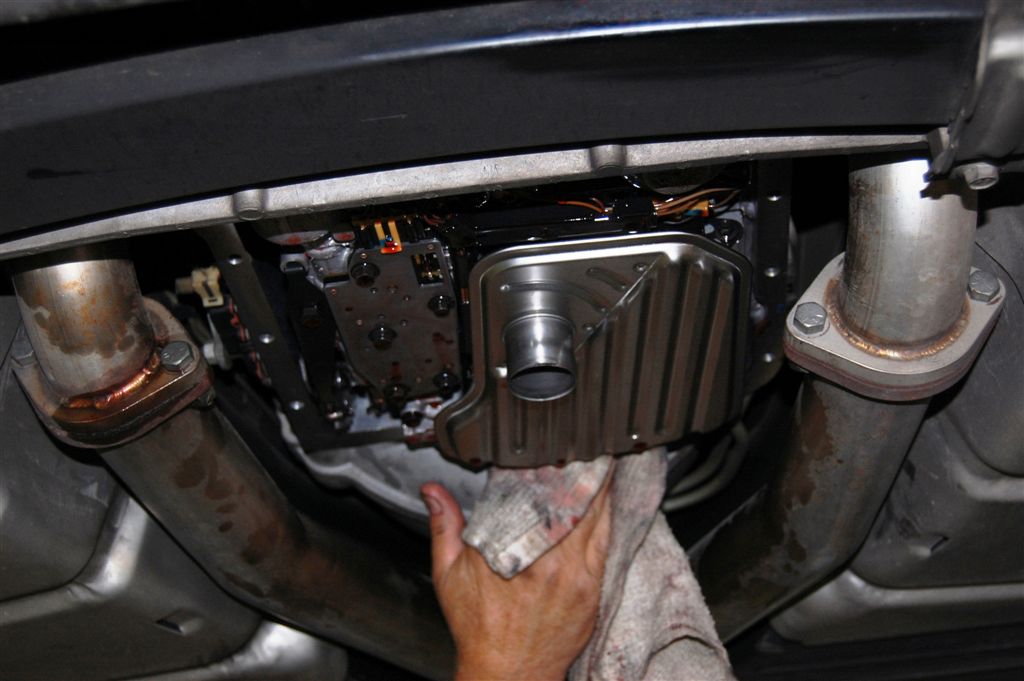
After the new filter is in place, wipe the pan gasket surfaces, carefully removing the fluid residue. Leaving the surfaces oily promotes leaks.
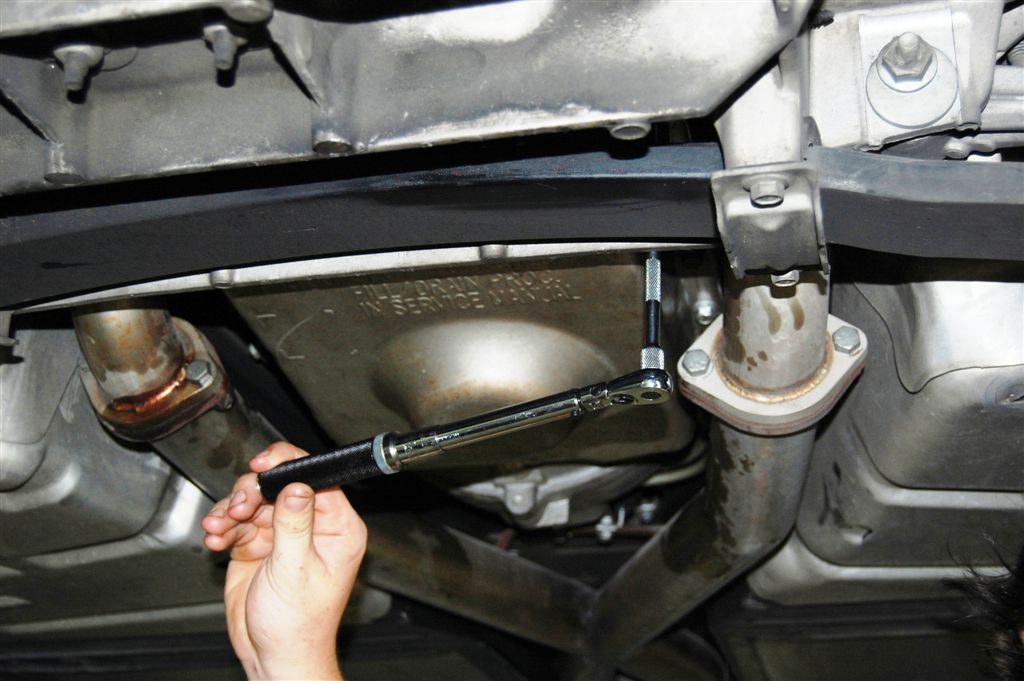
A very important part of the pan installation is the torquing of the pan bolts. We torque the bolts carefully to 110 lbs/in going over the bolt torque at least twice. The gasket has a tendency to compress, so one pass with the torque sometimes is not enough.
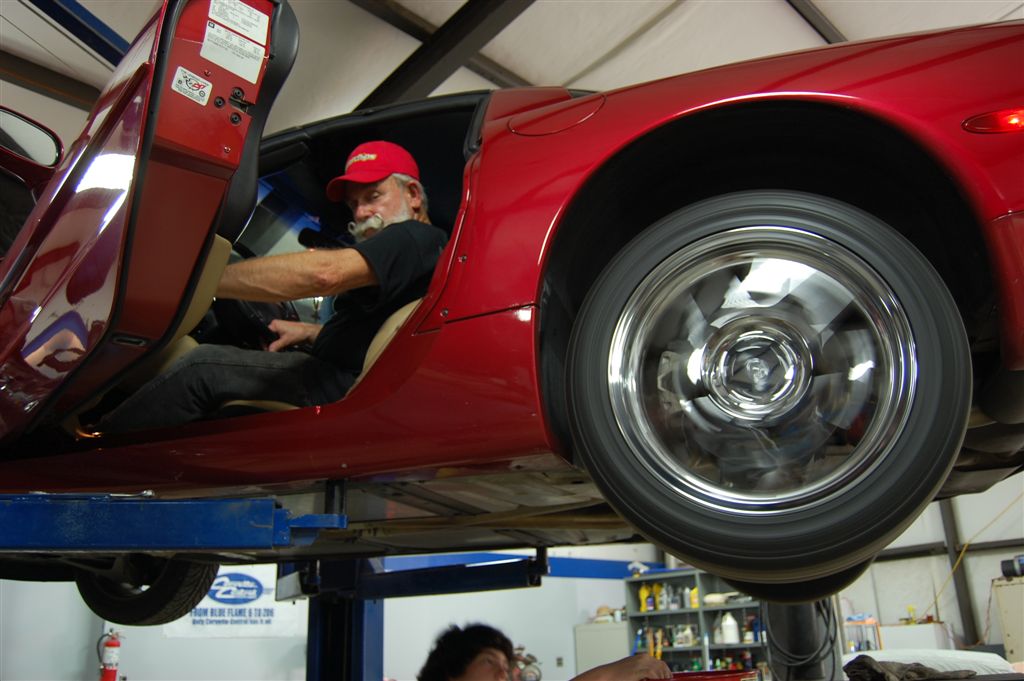
Now the interesting part. We have owner Al Sowash up in the car ready to start it. We have to fill the pan until the fluid runs out. The engine is started and then we fill the pan again until fluid runs out. After the fluid is filled, we install the plug and have Al put the trans in drive and reverse a few times.
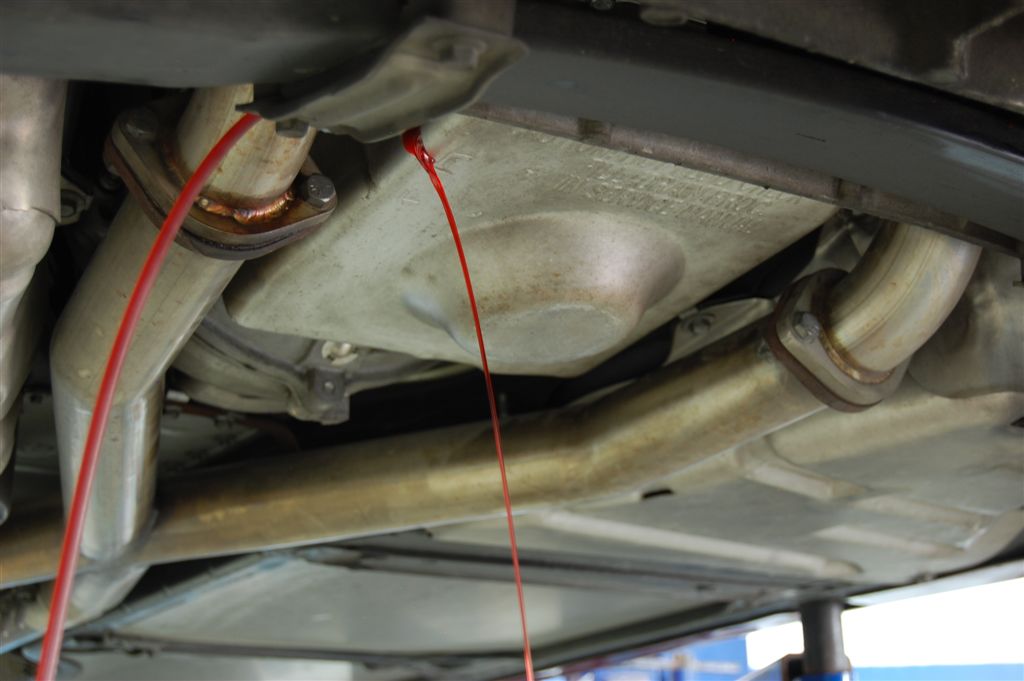
The final fill procedure requires us to remove the fill plug with the engine running and transmission in park. The fluid is filled until it runs out. When the fluid stops running out, we install the plug.
Differential
The differential is a relatively simple device that transmits the supplied power to the ground, whether you are traveling in a straight line or around corners. Metallic clutch plates are used for posi-traction axle control while allowing slippage around corners. Without the slipping clutch plates during cornering, the tires would chirp the tires while rounding every corner. All of the cornering wears the metallic posi-traction plates, which becomes full of metallic particles floating through all the bearings. There is no filter to keep the particles to a minimum in the differential gear oil. This can lead to early bearing failure.
Differentials also have to deal with extreme pressure concerning gear to gear contact. They require quality gear oils that keep constant film strength to prevent gear overheating and wear. Differential gear sets produce plenty of heat on long extended runs. Short trips on the other hand exacerbate the production of condensate that causes corrosion over time, making fluid changes every two years an excellent idea.
1997 and newer Corvettes use GM SPEC 9986115 fluid. The 9986115 fluid is tough to find. We found it was covered correctly under the Texaco differential fluid #2276 with many suppliers saying the GL-5 would be sufficient. What we were told is the C5-C6 factory fill requirements are for higher heat demands during break-in. After that, the GL-5 designation is more than adequate. We have found that C5-C6’s that are road raced have issues with overheated transmission fluid, so the differential can too since they are basically one unit. It makes a case for high quality differential and transmission fluids to be used in the C5 and C6.
The verdict is still out. Many C5-C6 owners are using GL5 spec 75W90 fluids in their cars. Using the GL5 spec fluid in synthetic form should be plenty adequate for the most demanding conditions. Synthetics handle heat much better than conventional oils. Corvette Central has GM synthetic fluid 89021677 available, which is the correct 9986115 spec.
C6 owners may find that they have a chattering or popping during cornering. GM has a special fluid called Dexron LS fluid to combat this problem. This fluid is equipped with additional posi-traction clutch plate additives to smooth out those cornering chatters. This same LS fluid works on the C5 if chattering is experienced during cornering.
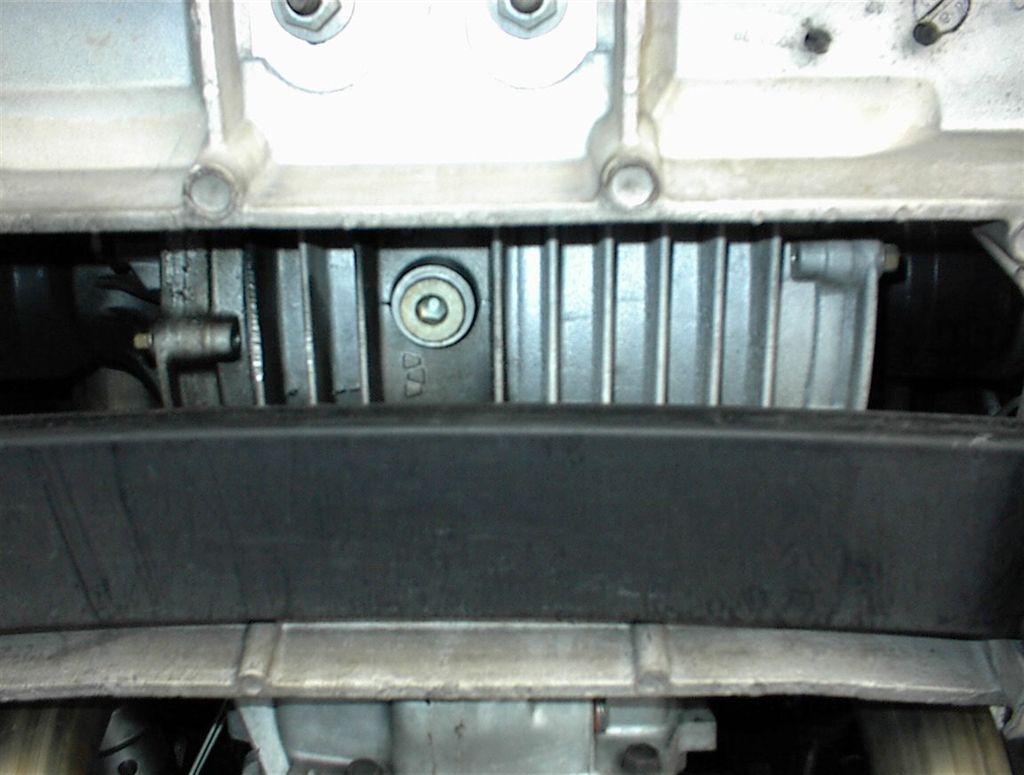
This is the differential drain plug you need to locate.
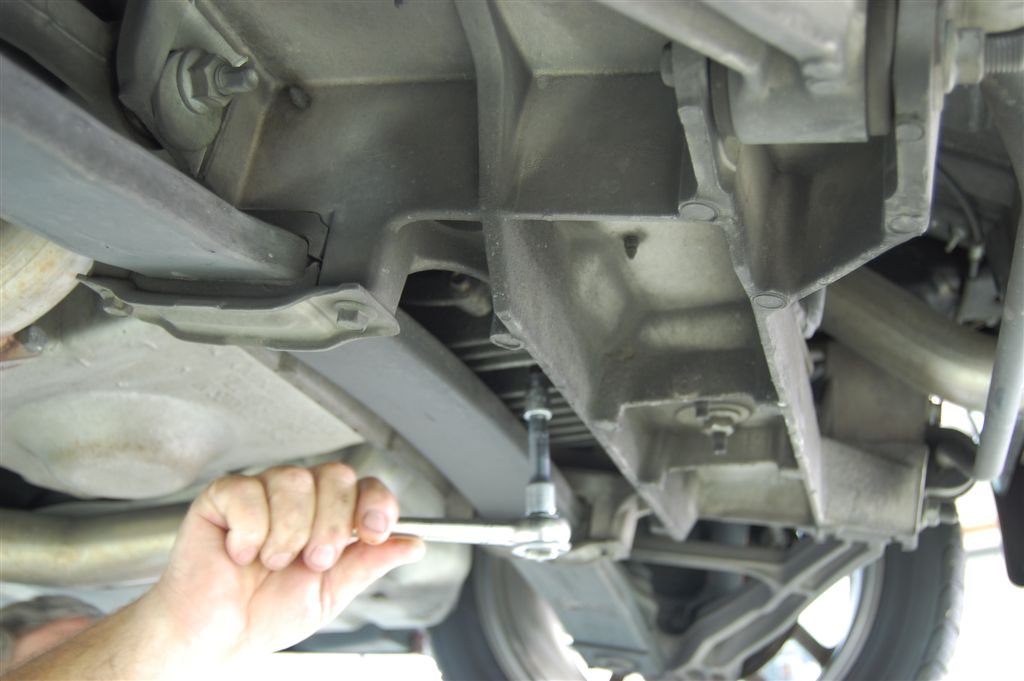
Here we have another perspective of the differential drain plug location.
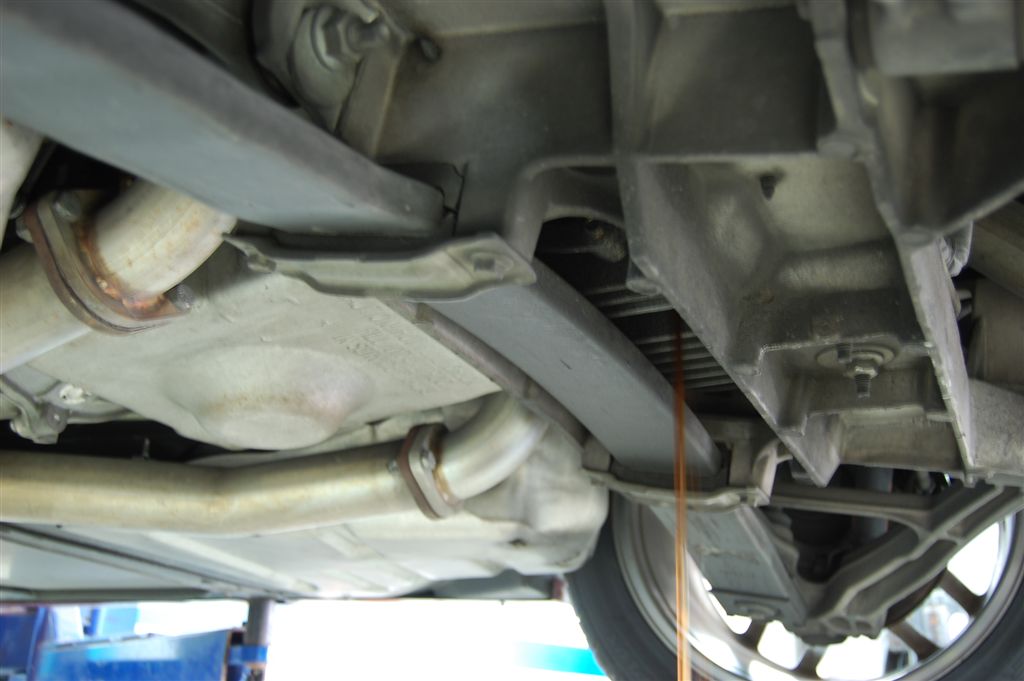
The 75,000 mile original GM differential fluid did not look too bad as it drained out. C6 Corvettes have a cooler fitting here that must be removed for the drain procedure.
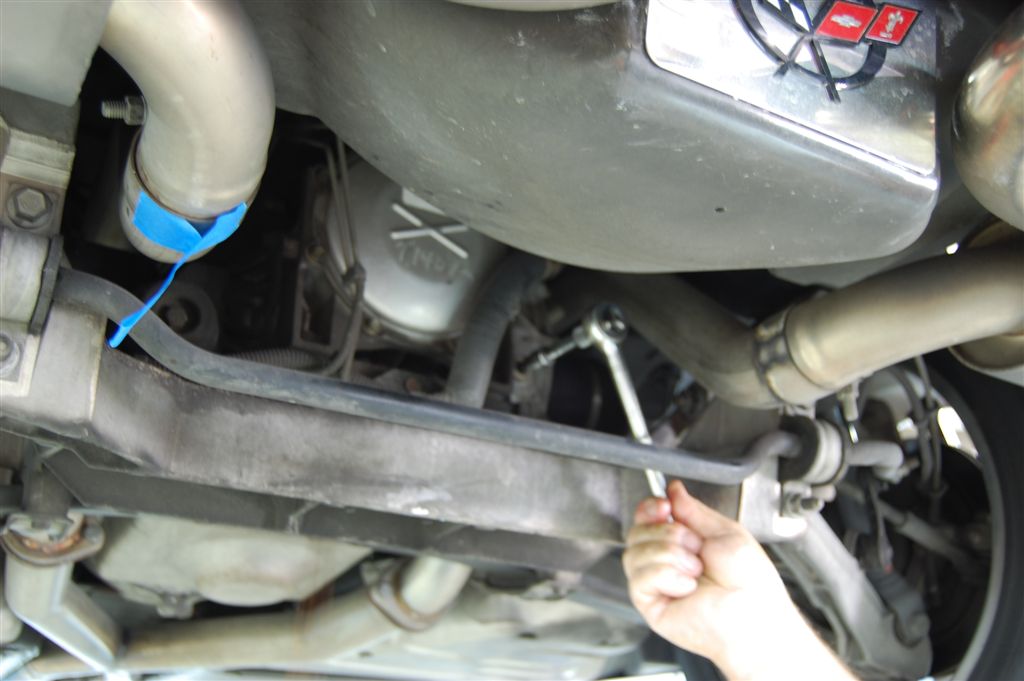
Our same 10mm allen socket will remove the differential fill plug. If you find the differential fluid is draining slowly, try removing the fill plug. If it drains quicker, the vent is stopped up.
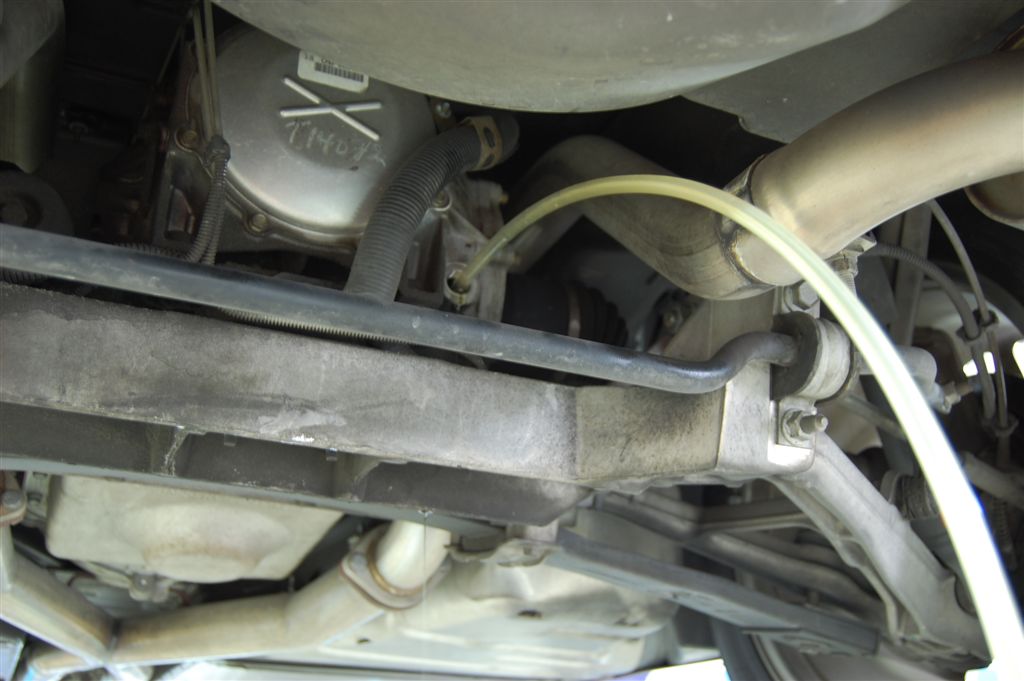
We use Corvette Central’s suction gun tool to fill the differential. Fill the suction gun and then force the fluid into the differential. Once the fluid is coming out, you know you are filled to the top. Do not install the fill plug until the excess fluid stops flowing out. This prevents overfilling and foaming of the fresh fluid.
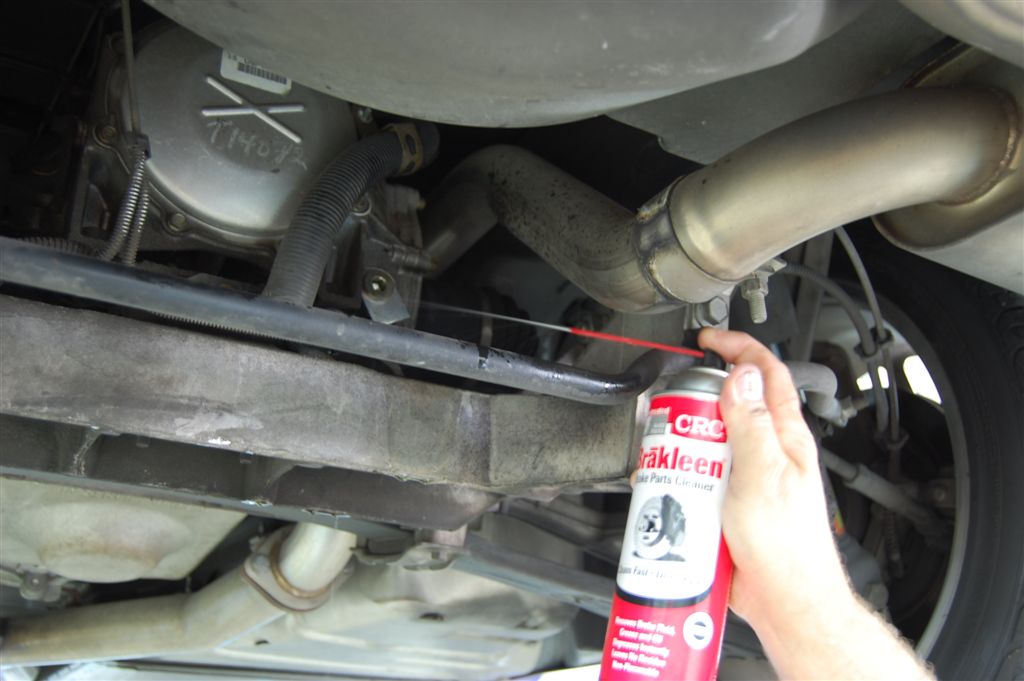
A quick spray down with brake cleaner is used to remove any spilled lubricant. If you have a build-up of debris around the fill plug, you may want to wash off the area before removing the fill plug.
To really appreciate just how far lubricants have come in the last 40 years, if you have a friend or buddy with a vintage engine or driveline component ready to overhaul, volunteer to help them pull it apart. Sludge build-up was common throughout an early engine using the best petroleum oils, keeping in mind engine temperatures were lower. Today’s hotter running engines using synthetic oils come apart easier and the components wear less. It makes you wonder if those early low temperature engines were better off. The same holds true for any driveline component sludge and metallic particles end up coursing through the bearings as mentioned earlier.
Oil/fluid additives are a touchy subject. Some of us are staunch supporters of them while others feel they have no value. Our recommendation is to check with the oil manufacturer. If they feel comfortable using them with their formula, go for it. GM has opinions about their usage. If your Corvette is under warranty, discuss with your Chevrolet service department before adding.
From the beginning, we tried not to throw fancy chemical formulas or terms concerning lubricants at you. These are facts gleaned from several insightful publications. After quite a bit of research, the facts are still the same. Changing the oil is paramount and synthetics are beneficial for engines, transmissions, and differentials. As far as additives are concerned, they would be up to your discretion. We have not tried to sway you towards any particular brand of lubricant. The best policy is to get all the data possible and make sure it meets or exceeds the vehicle manufacturer’s recommendations.
Remember less friction means more power, no matter how you look at it.
Story and photos courtesy Chris Petris
I have a 2007 base convertible have notice what sounds like tire rub the first time I go a round a corner. Looked and found signs of contact of tire to body or frame. Took the car and had the dif. oil changed sound went away. Was told to find an empty parking lot and do figure eights to make sure the fluid got up into the limited slip clutches. Now this only happened after the car sat for long periods of time. Have found that when the noise comes back a few figure eights cures the problem.
I am confused about the 1997 corvette , manual transmission changing. How to do this , what products to use, where to bleed the system, the master cylinder fluid changing and all the changes it raids to use and do to correct the heating problem when run above 5,000 rpm some times. Help!
Refer to the transmission section in your GM Shop Service manual for exact drain and fill plug locations (section 7 in the 1998 manual I have on hand). As the article shows, the drain plug is normally On the front side of the crossmember. They article also shows the fill plug and the fill procedure, using a pump. Dexron VI equivalent should be used. In the 1998 service guide I have on hand, the clutch bleeding procedure is also covered in section 7, sheet-351. The system can be bled at the clutch master cylinder. It is imperative that new fluid is used and the Shop Manual procedures are followed to properly bleed the system. If you do not have a shop guide, you can sometimes find them on Ebay for the 1997. Unfortunately, they have been discontinued to us and we no longer have them to sell. If you do not have the shop guide, it would be best to have a professional transmission shop undertake this job.
When draining C5 engine oil, the Factory service Manual says to have the bottom of the oil pan level, and for good reason. A look at the internal baffling of the batwing C5 pan shows that the baffling will trap oil if the pan is not level when draining oil.
There is no transmission check tube on a C5. You drain and fill from the same plug.
It is NOT an explosion but a controlled burn. Engines that explode the fuel are diesel by design.
In this instance, we are using the term ‘explosion’ in a general descriptive sense for the controlled burn.
Actually, cylinder pressures generated during the combustion process can exceed 500 psi, not 160 that was stated in the article. This equates to 3 tons of pressure per cylinder on an average 4″ bore engine.
You are correct. In our article, though, it states the engine compression is around 160 PSI when an explosion occurs, forcing the piston downward.
What about the problem with 97-2000 C5 manuals with “paper blocker rings” ? The old info was: You shouldn’t use synthetic oil with those years.
Mobile 1 has been tested and it will not harm the blocker rings whether they are paper or carbon. Mobile 1 is an approved fluid for your application.
Just bought our 2003 Annaversery Corvette. It has 118k miles on it. Noticed the transmission sliping. Looked almost everwhere and after days found your post. Very informative. Very tight quarters underneath. Doesn’t allow enough room to see fill plug. Haven’t located it yet. In the process I noticed small inlint type filter or breather hanging on top center passenger side of transmission. It appears to be disconnected from somewhere. Oil and grime is on top and all over the front of transaxel. Thought I would change trans oil and filter adding some Lucas trans treatment to see if that would cure the slip. If not, next step would be to remove and rebuild. Any suggestions? Thanks.
There is no fill plug on the automatic; fill from the check tube. Changing the fluids wouldn’t be a bad test before jumping into a rebuild.